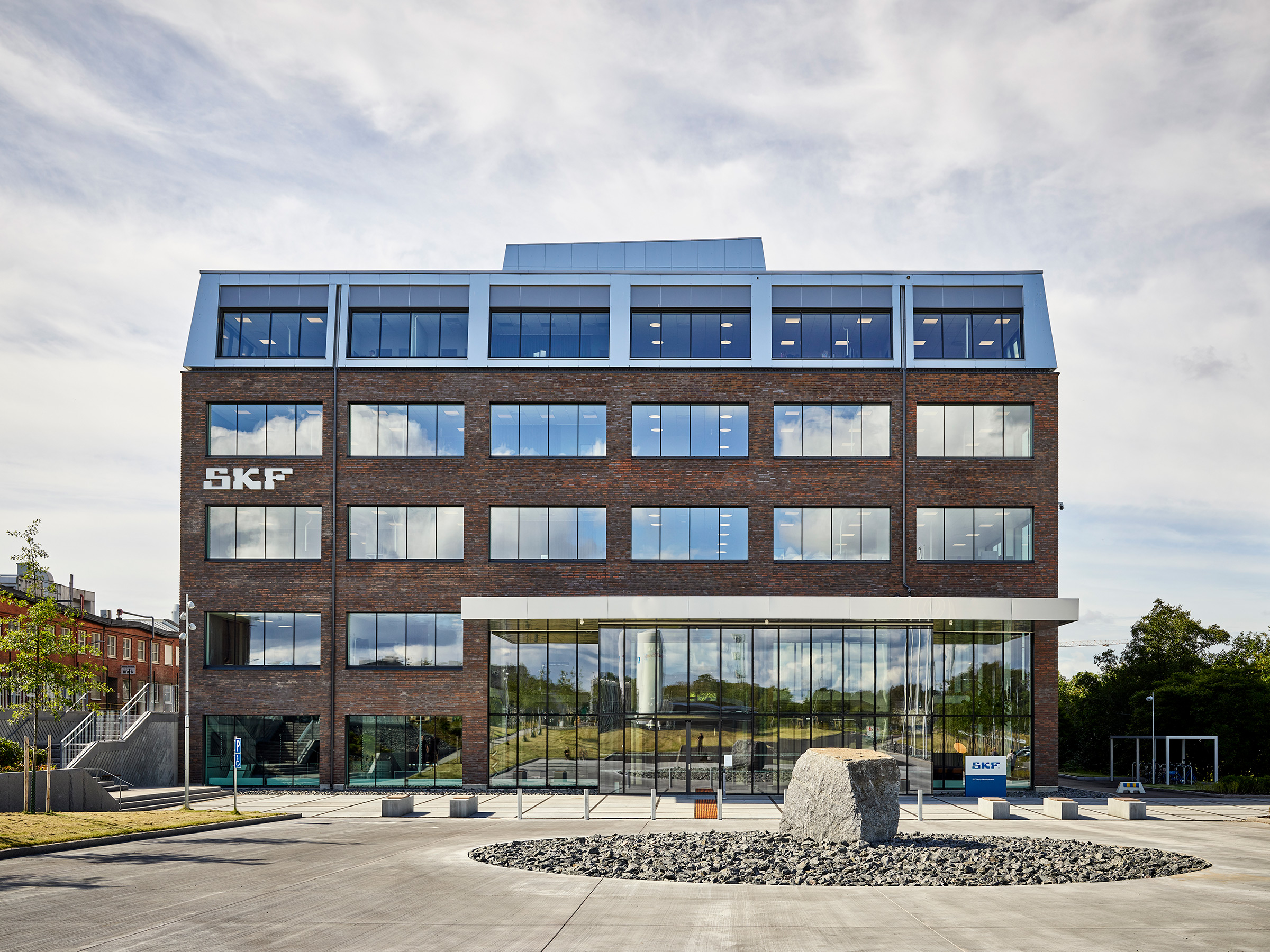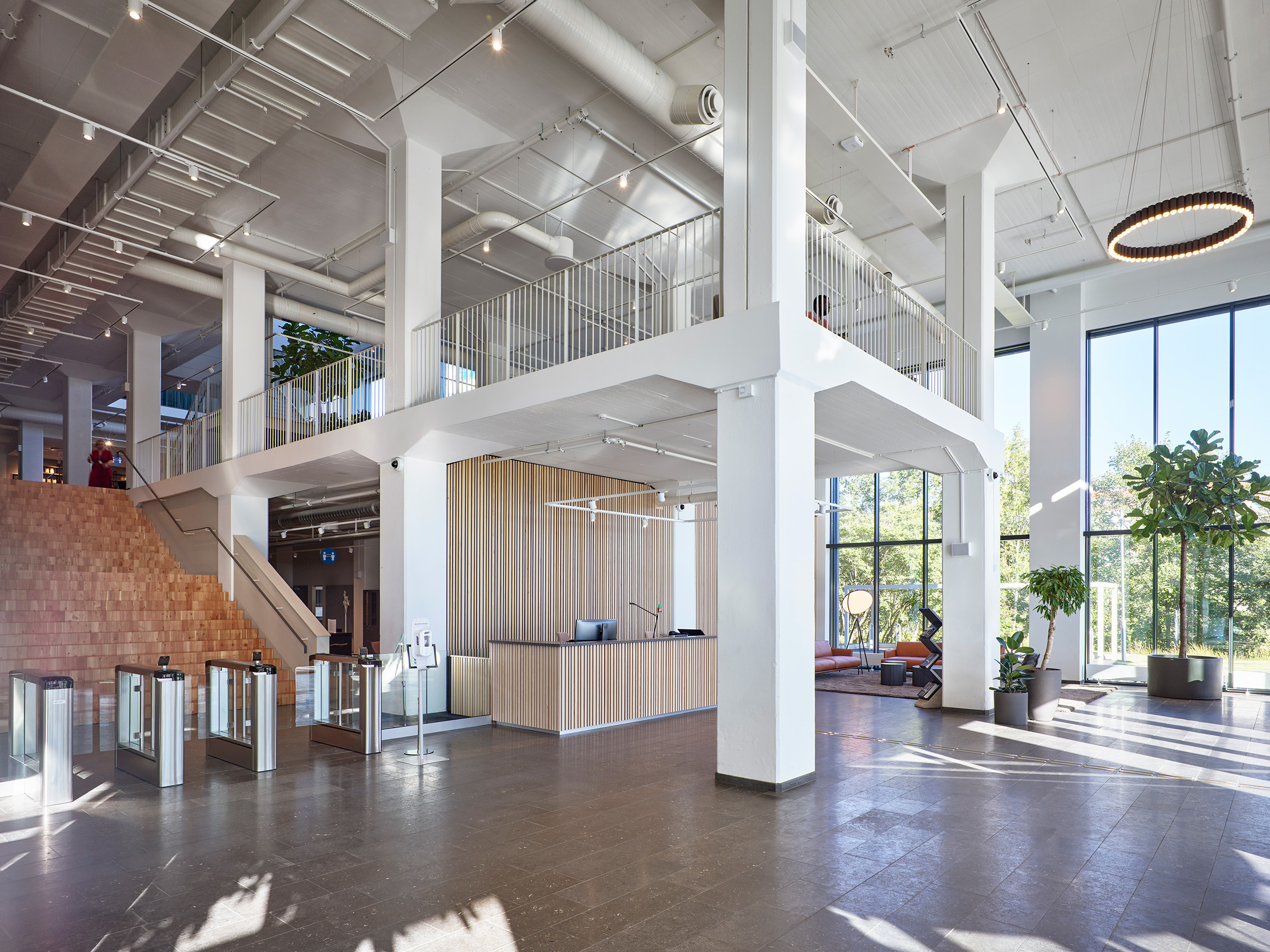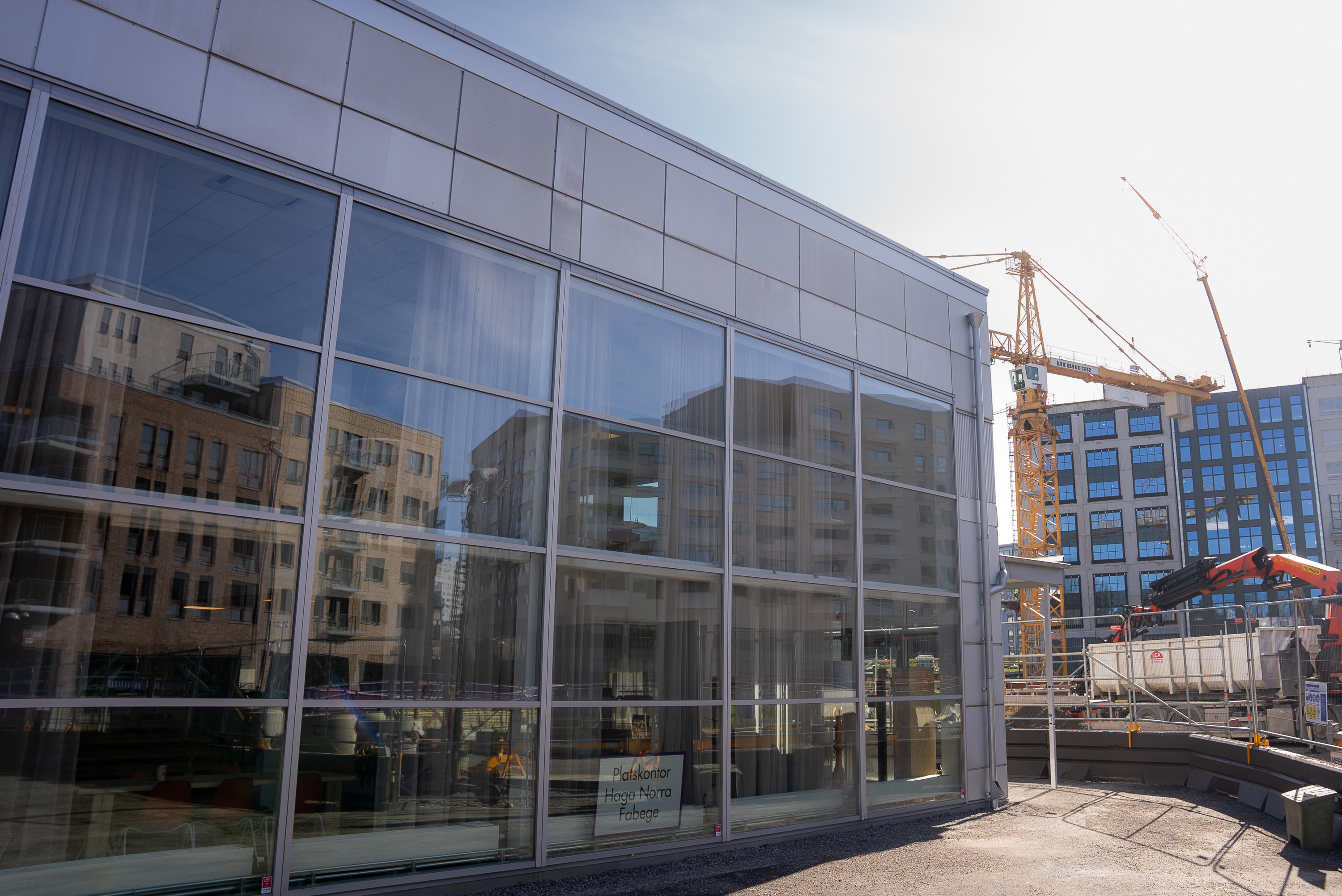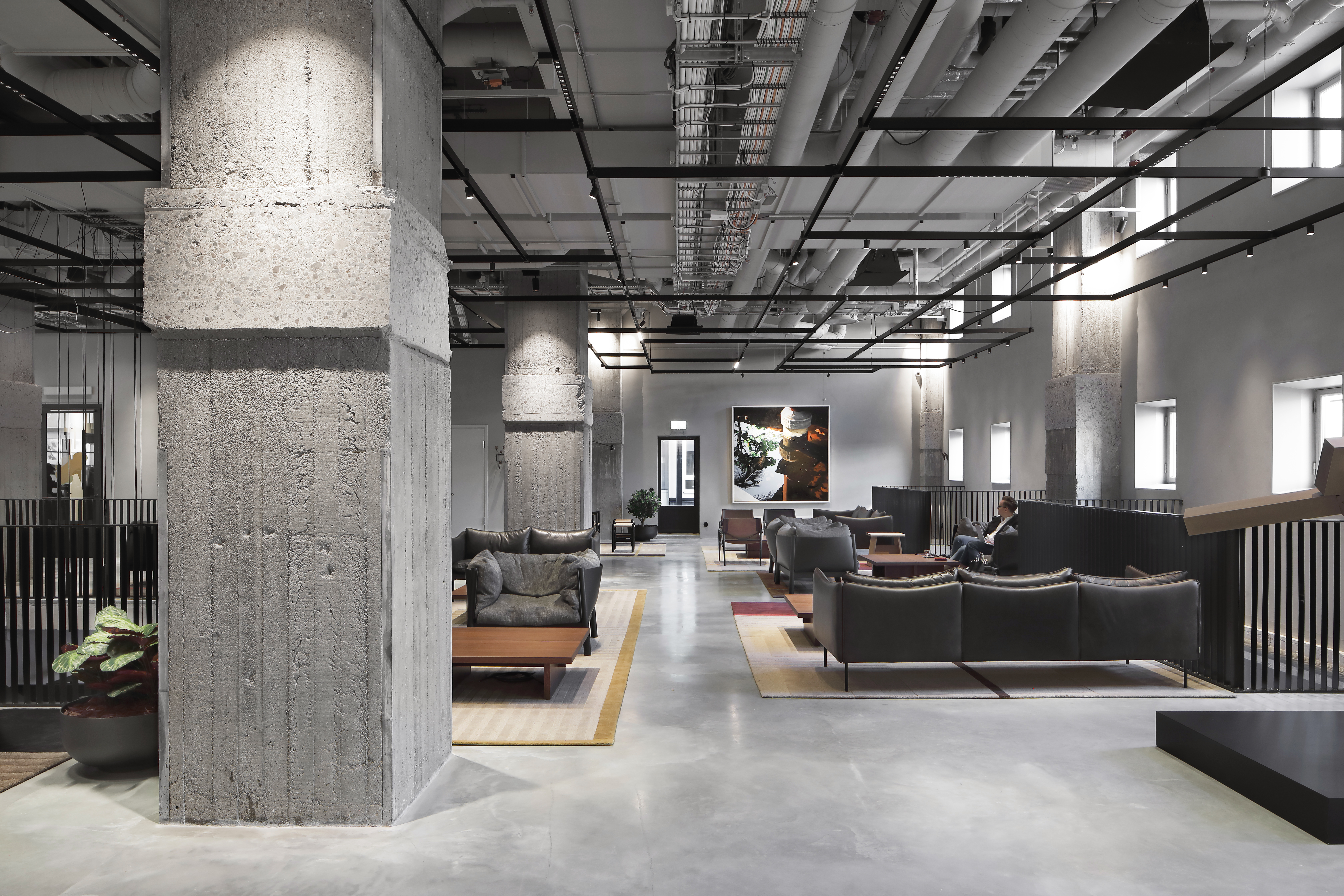The topic of waste is currently on many agendas and reuse is taking a number of forms such as making shoes out of drifting fishnets or orange peel that is reformed into cell phone covers. This is mainly motivated by sustainability aspirations, but using waste materials could also have so many other advantages.
Written by Stefan Nilsson
In architecture, waste is relevant. Houses have been built from other houses since the dawn of time. Reuse is key. Also in contemporary times. In New York, you can see a project like High Line which is built on an old railroad or see Tate Modern in London that were old turbine halls. There are many examples. In Scandinavia, we have this culture of reuse buildings, too. Look at the SKF head office on Göteborg that was built in 2020. In the Nordic region, we also have Danish star architect Anders Lendager, making himself a name for reusing tiles for building facades.


Headoffice of SKF in Göteborg by Liljewall Architects. 88 % of the construction was made of recycled materials.
Initiatives are being made all over Scandinavia. In Norway there is Futurebuilt (www.futurebuilt.no), in Finland there is Recreate (https://recreate-project.eu/) and in Denmark (p)recast (https://www.dti.dk/projects/p-recast/43887).
During 2021, the project of Återhus was introduced in Sweden. The project aims at developing new tools to accelerate the transition to circular construction, specifically for those reusing building parts in new buildings. The concept is mainly funded by Vinnova, the Swedish governmental innovation agency. 8 think-tanks came to some conclusions for the future. The common denominator with the other Scandinavian initiatives was found to be that there is a need to talk about new legislation, quality monitoring, testing, business models etc.

© Jan Suchorzewski
Jan Suchorzewski, researcher and unit manager at ther research institute RISE, who headed two of these work groups in Återhus, said he was pleased with the outcome: "In work projects which I led, we could see that the degradation of concrete from houses from the 70s and 80s was much lower than expected. We also noted that the regulations and legislation for adaptive reuse architecture was not adapted at all, but we are moving into that direction with full speed", says Suchorzewski.
Why is adaptive reuse architecture on the agenda today? Of course, for a handful of reasons. Sustainability is mentioned as the key factor. The construction and building industry produce over 20 % of the carbon dioxide emissions in a nation like Sweden. By not using virgin materials the emissions will be less.
There are talks of cost savings even though that is not a major reason. In some cases, adaptive reuse architecture can be more cost-effective than building new. Repurposing an existing structure can eliminate the need for new foundations, structural framing, and other costly building elements. Additionally, adaptive reuse can often be completed more quickly than new construction, which can result in cost savings.

Hållbarhetshuset at Haga Norra in Stockholm by Fabege. The house was nominated for ”Construction of the year 2023”. The house is made of 70 % recycled materials.
A third reason has a more cultural perspective. Adaptive reuse architecture can let the old building stay as a landmark but with new functionality. The example of Tate Modern comes to mind again. Sustainable designer Emma Olbers is in charge of the rebuilding of Ersta hospital in Stockholm. She is making the building as sustainable a possible and is for instance reusing the trees that were cut down for the new construction. "I think a lot of people want to have a historical connection to a building. In the future perhaps we will all say that we have a wall from the dismantled blocks of Klara (in Stockholm)", says Emma Olbers.

© Alexander Lagergren
We asked one of the founders for Återhus and asked why this concept occurs now: "Producing new things have since the industrial era been too cheap. We are now in a shift from materials to services (where reuse is one of them). Today there is a shortage of raw materials, uncertain political discourse, deliveries and most of all UN and EU is driving the change for a sustainable community", says Jelena Mijanovic, one of the founders of Återhus.
The concept of adaptive reuse architecture sounds all very good, but there are some doubts. For instance, one can talk about structural integrity where older buildings might not cope with their new function. This can be costly and time-consuming. Some people argue that adapting an old building for a new use may compromise its historical significance. For example, if a building has significant cultural or architectural value, some may feel that it should be preserved in its original form rather than modified for a new purpose. Should a church become a coworking space?
And finally, while adaptive reuse architecture can be a sustainable way to repurpose an older building, it may not always be the most sustainable option. Sometimes, it may be more energy-efficient to build a new, energy-efficient building from scratch rather than adapt an older building.

© Charlie Gullström
Charlie Gullström, innovation and research director at Sweco Architects, is also engaged in the complexities of utilising waste in architectural design projects. She concurs that there is a shift right now and that all players are getting more involved in this. There are a few new tools that architects have at their disposal to monitor carbon cost impact, such as Sweco’s award winning Carbon Cost Compass, with more being developed. Sweco’s Hotel Blique, in Stockholm, for example, saves both cost and carbon through adaptive reuse, equating figures of 230 CO2e and 750€ per square metre.

Hotel Blique by Nobis in Stockholm by Sweco Architects 2019, adaptive reuse of architect Sigurd Lewerentz’ office building for Philips in 1930. All windows were, for example, reused and retrofitted with new glass panes. © Jeanette Hägglund
"One of the key issues today is the acceptance that we cannot carry on with business as usual, this is fundamental, and we need to continually question our approach. This requires careful consideration of how adaptive and regenerative design are written into policy at a high level, and thereafter, implemented in regulatory frameworks and used on practical level. It will require collaboration, training, testing and then feeding back into policy. For example, if we reuse wood for a façade we need to know if it is durable for generations or should we find new or alternative solutions down the road? I believe that municipalities should be more engaged to allow for experimentation and help to rethink policy. We are now facing a new set of questions in the construction industry and the challenge is how we can comprehensively answer them, as a team", says Charlie Gullström.